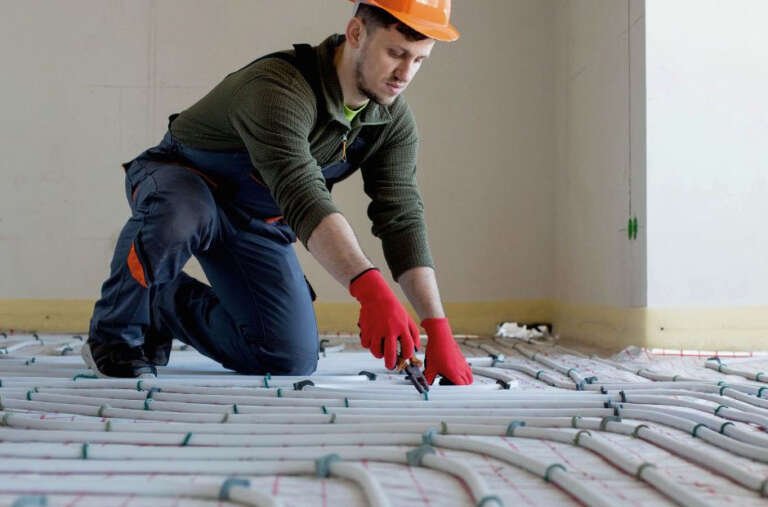A well-functioning roof is essential for the protection and longevity of any building. It shields the structure from weather elements, provides insulation, and contributes to the overall aesthetic appeal of the home. Understanding the various components and functions of your roof system can help you maintain it properly and make informed decisions about repairs or replacements. This guide will explore the key elements of a roof system, common roofing materials, signs of roof damage, and the importance of regular maintenance. By gaining a comprehensive understanding of your roof, you can ensure its durability and effectiveness for years to come.
1. Key Components of a Roof System
A roof system comprises several essential components that work together to protect the building. The main parts include the roof decking, underlayment, shingles, flashing, and ventilation. The roof decking serves as the foundation, providing structural support and a surface for other materials to attach. Underlayment is a water-resistant layer installed over the decking to provide an additional barrier against moisture. Shingles, made from various materials like asphalt, metal, or tile, form the outermost layer, protecting the roof from weather and enhancing its appearance.
2. Understanding Different Roofing Materials
The efficiency and durability of your roof are greatly affected by the material you choose for it. Because of its low cost and simplicity of installation, asphalt shingles are the go-to option. Metal roofs are long-lasting and cost-effective because they reflect heat. Although they need a sturdy framework to sustain their weight, tile roofs—typically constructed from clay or concrete—offer a unique appearance and extended lifetime. Shingles and shakes made of wood have a natural look, but they need upkeep to keep insects and deterioration at bay.
3. The Role of Roof Flashing
Roof flashing is a critical component that prevents water from penetrating the roof at joints and intersections. It is typically made from metal and is installed around areas such as chimneys, vents, and skylights. Flashing directs water away from these vulnerable points, preventing leaks and water damage. Proper installation and maintenance of flashing are essential to ensure its effectiveness. Damaged or improperly installed flashing can lead to significant problems, including mold growth and structural damage.
4. The Importance of Roof Ventilation
Roof ventilation plays a vital role in regulating temperature and moisture levels within the attic and roof structure. Proper ventilation helps prevent heat buildup in the summer and moisture accumulation in the winter, both of which can damage the roof and reduce its lifespan. Common types of roof ventilation include ridge vents, soffit vents, and gable vents. These systems work together to create a flow of air that maintains a balanced attic environment. Without adequate ventilation, issues such as ice dams, mold growth, and increased energy costs can arise.
5. Signs of Roof Damage
Recognizing the signs of roof damage early can help prevent costly repairs and extend the life of your roof. Common indicators include missing or damaged shingles, granule loss, water stains on ceilings or walls, and sagging rooflines. Additionally, visible cracks, rusted flashing, and mold or moss growth can signal underlying issues. Regular inspections, especially after severe weather, can help identify and address problems before they escalate. Addressing minor issues promptly can save you from extensive repairs and maintain the integrity of your roof.
6. Benefits of Regular Roof Maintenance
Regular roof maintenance is essential for preserving the condition and performance of your roof. Routine tasks include cleaning gutters, removing debris, inspecting for damage, and ensuring proper ventilation. These activities help prevent water damage, extend the lifespan of roofing materials, and maintain the efficiency of the roof system. Scheduling professional inspections at least once a year can provide a thorough assessment and identify potential problems early. Investing in regular maintenance can save money in the long run by avoiding major repairs and ensuring your roof remains in good condition.
7. The Process of Roof Replacement
When a roof reaches the end of its lifespan or suffers extensive damage, replacement becomes necessary. The process involves several steps, starting with a thorough inspection to assess the extent of the damage. Next, old roofing materials are removed, and any necessary repairs to the decking or structure are made. New underlayment and flashing are installed, followed by the chosen roofing material. The final step involves a detailed inspection to ensure proper installation and sealing of all components. A well-executed roof replacement enhances the home’s appearance and provides improved protection and energy efficiency.
8. Choosing a Roofing Contractor
When it comes to choosing a roofing contractor, homeowners should prioritize experience, expertise, and reputation. Researching local options is essential, if you are living in Houston, and selecting a roofing company in Houston resident’s trust can provide peace of mind throughout the process. Look for contractors with proper licensing, insurance, and a proven track record of quality artistry. Additionally, consider seeking referrals from friends, family, or online reviews to ensure you’re making an informed decision. By taking the time to select a reputable roofing company homeowners can rely on, you can rest assured that your roof will be in capable hands, leading to a successful and satisfactory roofing project.
Conclusion:
To keep your roof system functioning and lasting as long as possible, it is crucial to understand its complexities. The health of your roof is dependent on several factors, including careful material selection, adequate ventilation, the ability to spot problems early, and routine maintenance. Preventing little problems from becoming big ones requires proactive maintenance and prompt fixes. This will save you both time and money in the long term. By partnering with a trusted roofing contractor and staying informed about your roof’s condition, you can ensure it continues to protect your home effectively. Ultimately, a well-maintained roof enhances your property’s value and provides security and comfort for your family.








